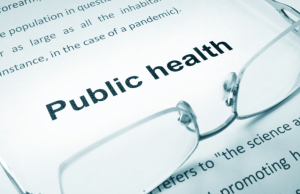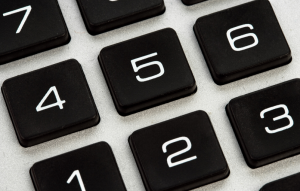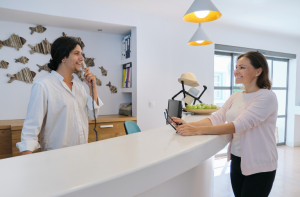Finally, it’s happening. “CLOSED” signs are being flipped to “OPEN”. Storefronts, shops, offices, and gyms that have been dark for weeks are turning their lights back on. The world is slowly getting back to normal. As people emerge from isolation to travel, attend parties, visit restaurants, and more, effective surface disinfection will be essential to keeping everyone safe. But you may not know which surfaces to disinfect in your facility or business to prevent infection and illness.
WHY YOU SHOULD DISINFECT
Before coronavirus turned our world upside down, cleanliness was important but not nearly as crucial as it is now. People want to see that businesses are making their safety a top concern by implementing strict hygiene, cleaning, and social distancing measures. Granted, there are some germs and bacteria that are harmless.
But for the ones that can cause life-threatening illnesses, like COVID-19, you’ll need to use an EPA registered disinfectant to effectively kill them on surfaces to prevent them from getting your customers or employees sick. Germs get on surfaces a few different ways, including touching. But ultimately when people share multiple surfaces, equipment, and spaces, it makes it that much easier for them to spread. If sanitizing and disinfecting isn’t a priority, pathogens can quickly spread, putting others at risk.
THE CONSEQUENCES OF NOT DISINFECTING
Failing to consistently and routinely disinfect surfaces comes with many consequences. There are several things that can happen if your business doesn’t prioritize sanitizing and disinfecting, none of which are good.
INFECTION
Perhaps the most obvious consequence of failing to disinfect surfaces is infection. Germs can cause a range of skin, respiratory, fungal, and gastrointestinal illnesses such as norovirus, MRSA, and RSV. When these pathogens are ingested, touched, or even consumed by unsuspecting victims in your facility, it will undoubtedly cause sickness.+
OUTBREAKS
Outbreaks happen when four or more people get sick from the same disease in a small or large localized area. An example would be if several footballs contracted Staph from the fitness center. Not only is this horrible for your reputation, disinfecting a facility after an outbreak is expensive.

PUBLIC HEALTH REPORTING
Once an outbreak happens, you are required to notify your local or state health department. After the outbreak has been reported, there will be mass communication sent to notify the community about the risk associated with your facility. You’ll also need to inform your current customers about it as well. This alone could cause you to lose thousands of dollars in revenue.
LOSS OF BUSINESS
After your business has been deemed dirty or unsanitary, it will be a turn off for some people. As a result, don’t be surprised if you see a dip in foot traffic.
SHUTDOWN
The worst-case scenario of failing to properly disinfect your facility is a mandatory shutdown. Now more than ever, public health and safety agencies are taking cleanliness and hygiene standards and requirements very seriously to help prevent the spread of COVID-19. If your facility isn’t up to par, it could quickly be shut down.
TOP SURFACES TO DISINFECT POST COVID-19
Upon reopening and as a best practice, these are the top 8 high-touch surfaces to disinfect in your facility.
1. DOOR KNOBS
Doorknobs and door handles are touched by every person that enters your facility. This is the reason why doorknobs and door handles are one of the dirtiest high-touch surfaces known to be crawling with germs. In one study, a single virus had been contracted by 40 to 60 percent of the staff in just 4 hours. Doorknobs and door handles are extremely contaminated due to poor hand hygiene.
2. GYM EQUIPMENT
As members sweat and huff and puff their way through their workout, germs are spewed all over the equipment they are using. Additionally, if they don’t practice frequent hand washing or using hand sanitizer throughout the day, whatever they touch – screens, weights, yoga mats – will all become contaminated.
What makes gym equipment especially dangerous that they come into direct contact with bodily fluids which can spread diseases such as hepatitis, HIV, and MRSA. Learn how to clean your gym equipment in three easy steps by reading this article.
3. HANDRAILS
Similar to doorknobs and door handles, handrails are another surface to disinfect because of how contaminated they can get very quickly. People typically use the handrails in your facility when they need assistance going up and down stairs. Since they are another surface touched by hands, they tend to have loads of germs on them.

4. TOUCHPADS & KEYPADS
Dozens of contaminated fingers touch these surfaces each day as people use them to complete payments at stores and enter their information. Since touchpads and keypads come into direct contact with hands covered in germs, dirt, and grime, this should be one of the top surfaces to disinfect in your facility. Don’t forget to wipe down screens and keyboards as well.
5. PHONES
Both cell phones and desk phones contain loads of germs and are seldom disinfected. Fecal bacteria, which is known to cause norovirus, is commonly found on phones, as well as influenza and rhinovirus, which causes the common cold. In office areas where desk sharing is the norm, desk phones tend to be swapped between many employees without being properly sanitized or disinfected.

6. FRONT DESKS/COUNTERS
Typically the first stop for customers and guests to check-in or register is your front desk or counter. In addition to this, several employees also manage this area at a time, making it a high-traffic area that is prone to collect germs. Not only do people touch the desk and its contents with their contaminated hands, but germs also land on them via sneezes and coughs. Make it a habit to wipe down the desk, phones, keypads, bells, and more to kill germs that can get people sick.
7. CHAIRS & SEATS
Think chairs are safe since people only sit in them? Think again. Germs that may live on people’s clothes get transferred to the seat of the chairs. Also, when people place their arms and hands on armrests, germs travel from their skin to the chair’s surface. Chairs and seats are also seldom disinfected, making them one of the most important surfaces to disinfect.
8. ELECTRONICS
Computers, tablets, headphones, cell phones, game controllers, remotes, televisions, and other electronic devices spend a lot of time getting touched by germy hands. They are also often shared and passed among multiple people. To keep these items free of fingerprints as well as germs, make sure to include them in your cleaning plan as surfaces to disinfect regularly.
KEEPING CLEAN FIRST PAYS OFF
Making sure to keep every single item in your facility clean and safe can be challenging, but it’s not impossible. Having strong attention to detail and being committed to ensuring all surfaces and equipment is disinfected so that germs are not lingering does pay off. The safety of your customers and the prevention of sickness and illness is well-worth it. Need help creating a cleaning schedule? Read our blog post on how to make a plan to prioritize cleanliness.
